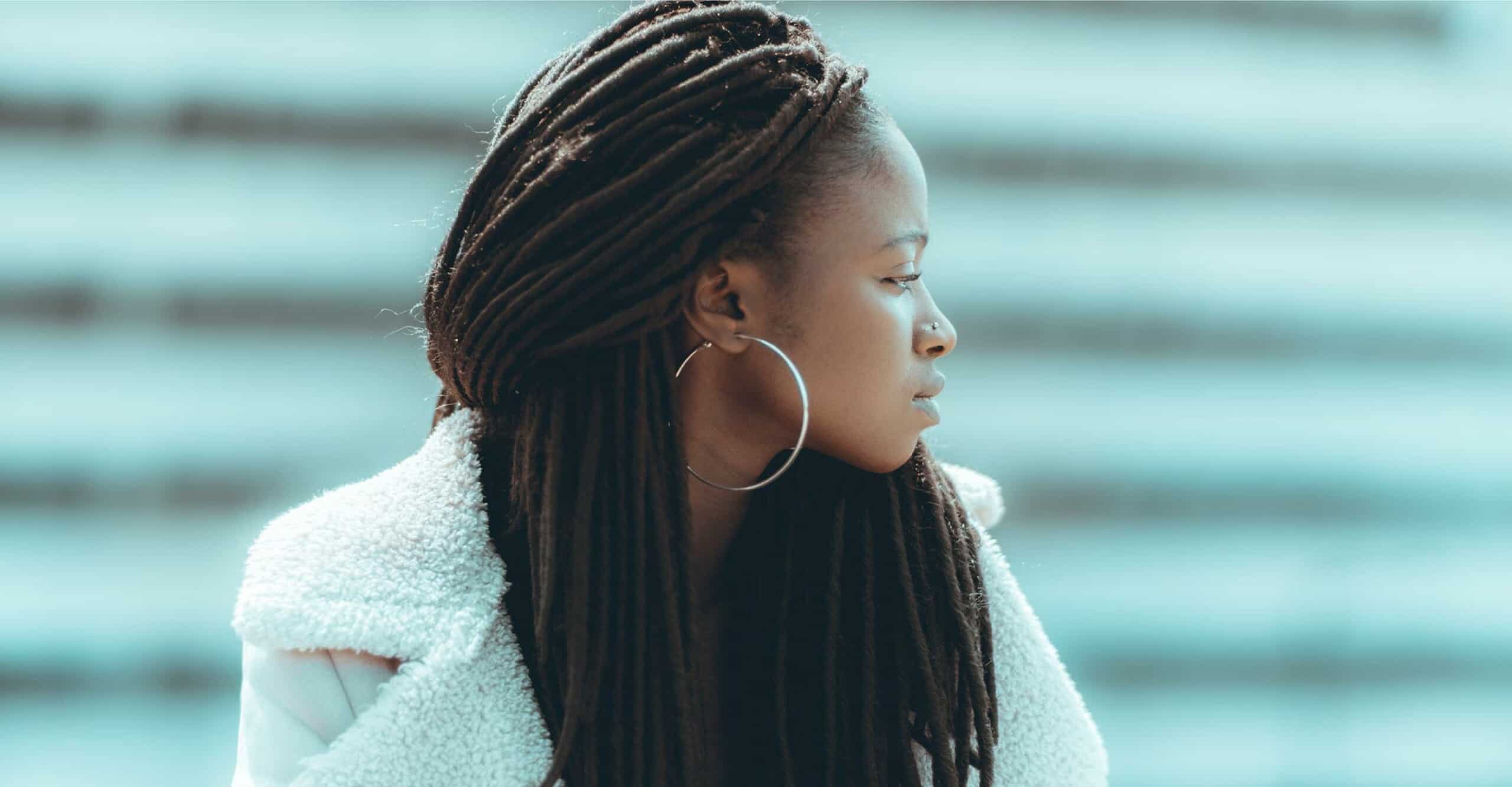Soft Locs vs. Faux Locs: Hairstyle Differences Compared
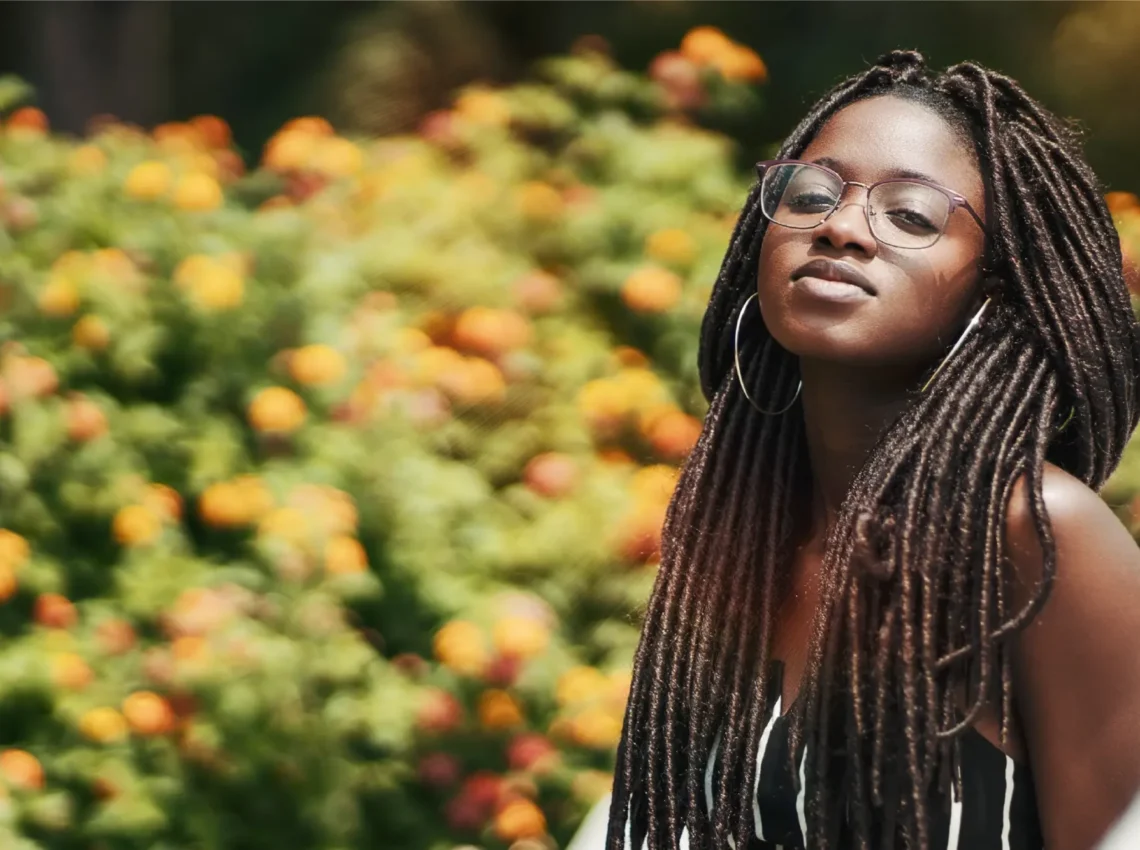
Locs are an influential style in the history of Black hair, often seen as a traditional rite of passage for people who choose to wear them. But locs take some dedication to mature — up to two years, in fact. It’s no surprise that this leads people to experiment with imitation locs for the look of locs without the time commitment.
There are many different styles of imitation locs to explore. Once you consider the differences between soft locs vs. faux locs, reach out to a loctician near you for an expert opinion on which style to try.
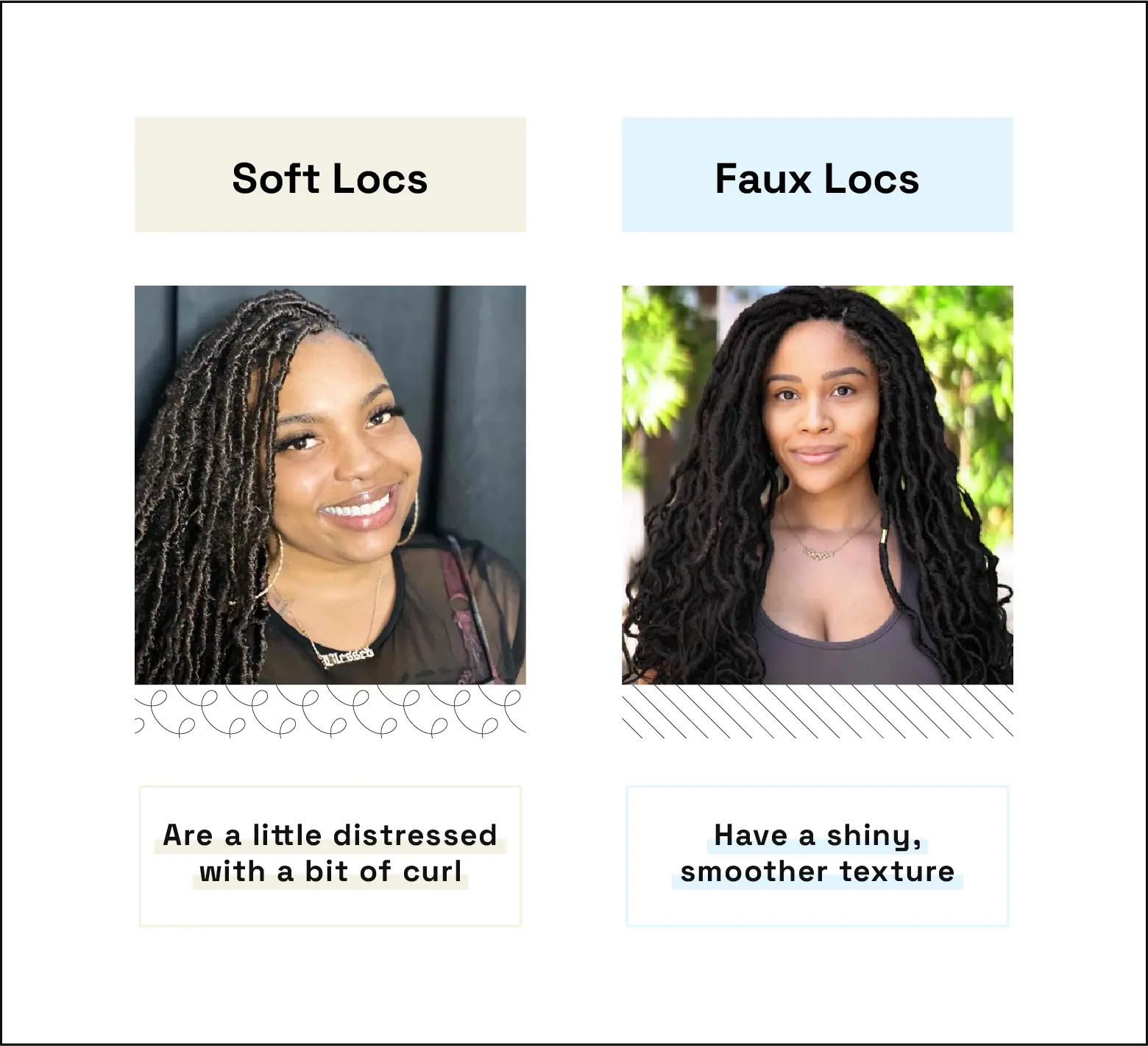
What are soft locs?
Soft locs are a type of faux loc that’s crocheted into hair. They’re generally pre-formed, which makes them softer, lighter, and more pliant than other types of faux locs. This makes them perfect if you’re indecisive because you can style them in many different ways.
Pros and cons
Pros
- Installed in a few hours
- Easily removable
- Protective style
- Lighter and more flexible than other faux locs
- Pre-formed locs can be reusable
Cons
- More expensive than other faux locs
- Tangle easily
What are faux locs?
Faux locs are imitation locs — they’re hair extensions that are locked instead of your natural hair. Sometimes the locs are pre-formed, or stylists will manually loc packs of hair. Faux locs have a few advantages over natural dreadlocks:
- Quick to install
- Easy to remove
- Protect natural hair
While natural locs are also a protective style, many people damage their hair by not caring for or removing them properly. Natural locs can be combed out, but the process is very difficult, so many people choose to cut or shave off their locs. Faux locs are removed similarly to other braided hair extensions, so they’re easy to take down without damaging your natural hair.
Pros and cons
Pros
- Styled in a few hours
- Easily removable
- Protective style
- Some types can transition your hair into natural locs
Cons
- Can be stiff and heavy
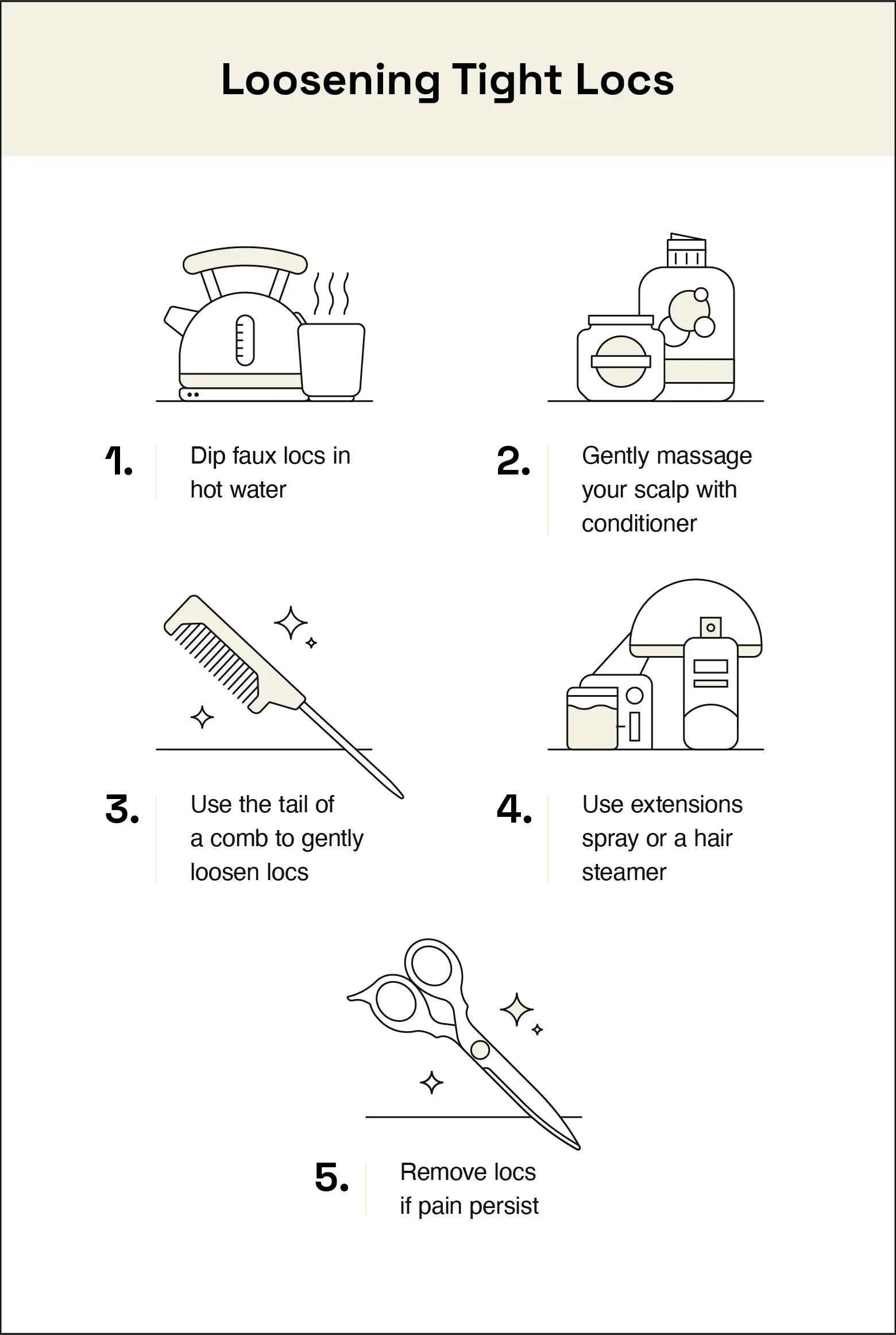
Soft locs and faux locs compared
There are some key features that set soft locs apart from other faux locs. Let’s see how they compare.
Installation techniques
The braid-in and crochet method are the two main ways soft locs and faux locs are installed. For the braid-in method, your hair is first braided (typically in box braids), then extensions are wrapped around the individual braids, forming locs.
For the crochet method, your hair is braided into cornrows, then pre-formed locs are crocheted into the cornrows. Soft locs are typically installed this way, but you can get braid-in soft locs by using curlier hair, such as passion twist hair.
Types of hair used for soft locs:
- Water wave
- Faux soft locs
Types of hair used for faux locs:
- Marley
- Faux crochet locs
According to our internal data, the average cost of faux locs is $208 and the average cost of soft locs is $187. This pricing will vary based on where you live and the style you’re looking for. For example, longer soft locs will probably cost a bit more than a soft locs bob.
Locs longevity
Both soft locs and faux locs last four to six weeks. Faux locs may last slightly longer than soft locs because they’re wrapped tighter — this is also why they don’t look as natural right out of the salon and can be heavier on your hair. However, if you leave either style in for too long they pull at your scalp, which can cause issues like traction alopecia and damage to your natural hair type.
The best way to extend the life of your locs is to ensure they don’t unravel. This means being extra careful when you’re styling or washing your hair to not disturb the faux or soft locs.
Weight and tension
Faux locs generally weigh more and have more tension than soft locs. For some people, the added weight and tension can cause headaches or pain on the scalp. If you want to try out faux locs but are concerned about comfort, talk to your stylist. They should be able to loosen the wrap a bit to reduce any discomfort until you’re more comfortable with faux locs.
Loosening faux locs will shorten their life span, but it’s necessary if you’re experiencing discomfort. Here are some tips you can try to loosen up your locs:
- Dip faux locs in hot water
- Gently massage your scalp with conditioner
- Use the tail of a comb to gently loosen locs
- Use a hair steamer or extensions spray
- Remove locs if pain persists
You could also try soft locs from the start if you’re worried about comfort. Faux locs can take several days to soften up and look more natural, but soft locs have this effect straight out of the salon chair. For example, you could immediately toss your soft locs in a pony or bun after leaving the salon, which would be uncomfortable for a few days with other faux loc types.
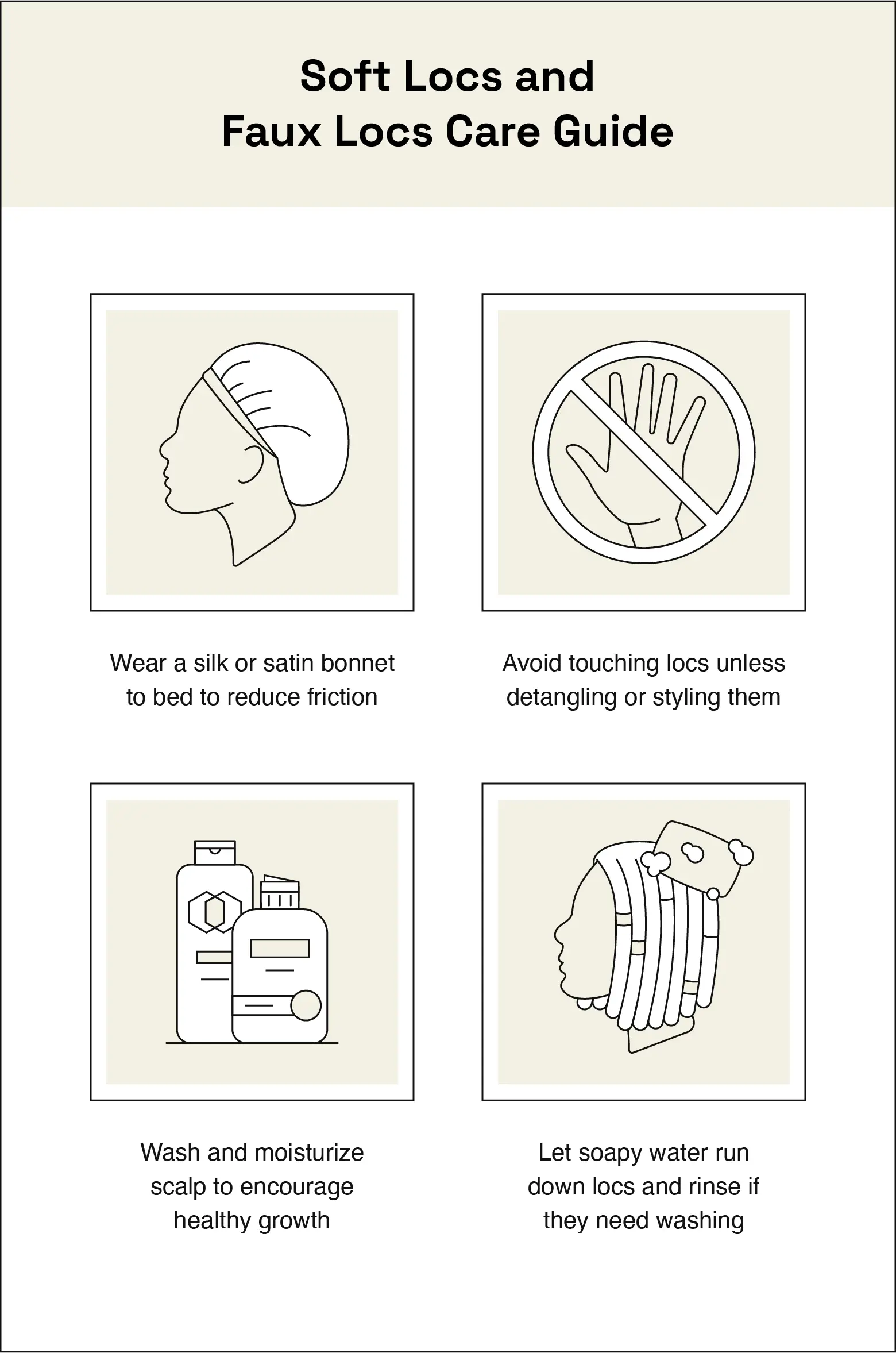
Care
When it comes to caring for faux locs or soft locs, less is more. To make them last, try not to touch the locs as little as possible, so they don’t unravel. Be extra careful when you’re styling your locs to avoid tangling them or disturbing the wrap. Finally, invest in a silk or satin bonnet to wear at night. This will reduce friction while you sleep to help ensure your locs last.
To keep your faux locs looking brand new, you should avoid washing the locs themselves. However, it’s important to take care of your scalp. Make sure you’re washing your scalp and moisturizing it properly to encourage healthy growth. If you’re feeling like your locs could use a scrub, let the shampoo run down them when you rinse your scalp, but avoid suds on the locs directly.
Styling
Whether you want to throw your hair up as you head out the door or love taking your time with new styles, different types of locs are better suited for different routines. Both soft locs and faux locs are relatively low maintenance once they’re installed, and will look great even when you’re on the go.
If you love wearing your hair down, faux locs are perfect for showing off your length and staying camera-ready. If you love playing around with different ways of doing your hair, then soft locs are more versatile because you can do many different hairstyles with them, from fun space buns to elegant updos.
FAQ
Still have some questions about faux and soft locs? Check out answers to these common questions below for the inside scoop.
Soft locs are a type of faux loc that’s softer and more flexible than traditional faux locs. They’re ideal for people with sensitive scalps or who like to sport different hairstyles because they’re quite versatile.
Locs are created when natural hair is braided, rolled, or backcombed to create rope-like strands of hair. Faux locs achieve the same effect, but hair extensions are locked instead of your natural hair.
Soft locs last four to six weeks depending on how fast your hair grows and how much you handle your hair.
When installed correctly, soft locs don’t damage your natural hair. In fact, they’re a protective style because your hair is protected from heat and other damaging factors.
Soft locs are created with different hair than other faux loc types, which makes them lighter. This means they don’t pull on your scalp as much and makes them very comfortable to wear.
No, soft locs only last four to six weeks. If you’d like to use imitation locs to speed up your natural loc journey, some types of faux locs can be kept in if you loc new growth. You should consult your loctician before trying this to ensure that your hair stays healthy.
Whether you want to go with soft, faux, or traditional locs, reach out to a loctician on StyleSeat today to get your locs journey started.
